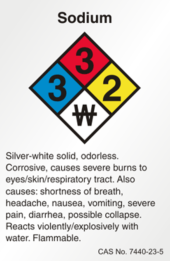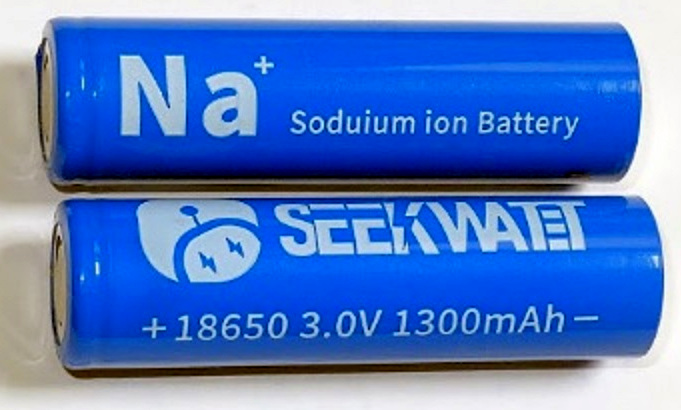ghostwriter66
"Here - Hold my Beer"
So last week they flew 2 of us back to SFO to meet with some of the CATL folks to give us a demo of the sodium-ion batteries that will probably be hitting the market late 2022 but for sure mid 2023.
The first 15 minutes of the conference was them explaining how LFP batteries - which they have based an enormous amount of their financial stability and effort behind is going to start running VERY short starting end of this year and then probably will always be short supply after that... this will cause prices to go up and basically with the anticipated amount of EV cars on the market - they had to come up with a PLAN B quickly ... Because the world relying on an endless supply of "cheap" lithium, Nickle, cobalt and aluminum to make these LFP batteries was a non-starter.
Then next 2 hours was "sodium" time - OK -- so basically the takeaways are pretty straightforward .... to pack the same amount of KWH as LFP the sodium battery has to be about 30% larger BUT instead of being made up of one of the rarest material(s) on earth it is com[posed of basically the 6th most abundant source of material - sodium / salt ... so really its just a big ol' salt battery ...
The first 2 years that the Sodium batteries comes out they will be much larger than LFP and much more expensive (most companies will try to make back their startup costs in the first 3 years for going to Sodium) ... The Chinese (gotta love those ppl) have already started making manufacturing facilities getting ready for Sodium battery production to once again capture the world market. The US manufacturers are apparently still trying to figure out how to spell sodium - plus with our (US) plants being union regulated and OSHA, etc etc - unless there is an embargo tax - the Chinese Sodium batteries will again be about 1/2 the price as the US made ones are ...
anyway ... the take away is Sodium-Ion batteries compared to lithium-iron phosphate batteries will have a somewhat higher cost (initially first 2 years) and will be about 30% lower energy density (same size comparison), and if you are not concerned about the extra weight or size - they will have similar power delivery characteristics. In about 2025 the Chinese will have got the cost of making these batteries so low that LFP will probably become a niche market since a huge Sodium Ion customer will be those using it for home and grid storage systems where battery weight is not important.
However until they can get the weight down - which they will through improving density - the EV market and the portable device market will still be Lithium based ...
What a cool time for all of us to be involved in all of this ...
The first 15 minutes of the conference was them explaining how LFP batteries - which they have based an enormous amount of their financial stability and effort behind is going to start running VERY short starting end of this year and then probably will always be short supply after that... this will cause prices to go up and basically with the anticipated amount of EV cars on the market - they had to come up with a PLAN B quickly ... Because the world relying on an endless supply of "cheap" lithium, Nickle, cobalt and aluminum to make these LFP batteries was a non-starter.
Then next 2 hours was "sodium" time - OK -- so basically the takeaways are pretty straightforward .... to pack the same amount of KWH as LFP the sodium battery has to be about 30% larger BUT instead of being made up of one of the rarest material(s) on earth it is com[posed of basically the 6th most abundant source of material - sodium / salt ... so really its just a big ol' salt battery ...
The first 2 years that the Sodium batteries comes out they will be much larger than LFP and much more expensive (most companies will try to make back their startup costs in the first 3 years for going to Sodium) ... The Chinese (gotta love those ppl) have already started making manufacturing facilities getting ready for Sodium battery production to once again capture the world market. The US manufacturers are apparently still trying to figure out how to spell sodium - plus with our (US) plants being union regulated and OSHA, etc etc - unless there is an embargo tax - the Chinese Sodium batteries will again be about 1/2 the price as the US made ones are ...
anyway ... the take away is Sodium-Ion batteries compared to lithium-iron phosphate batteries will have a somewhat higher cost (initially first 2 years) and will be about 30% lower energy density (same size comparison), and if you are not concerned about the extra weight or size - they will have similar power delivery characteristics. In about 2025 the Chinese will have got the cost of making these batteries so low that LFP will probably become a niche market since a huge Sodium Ion customer will be those using it for home and grid storage systems where battery weight is not important.
However until they can get the weight down - which they will through improving density - the EV market and the portable device market will still be Lithium based ...
What a cool time for all of us to be involved in all of this ...





